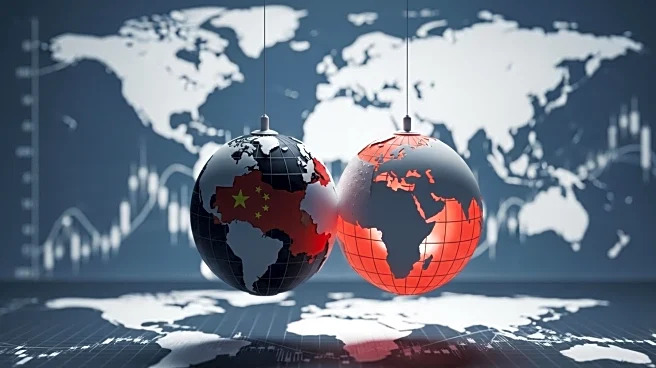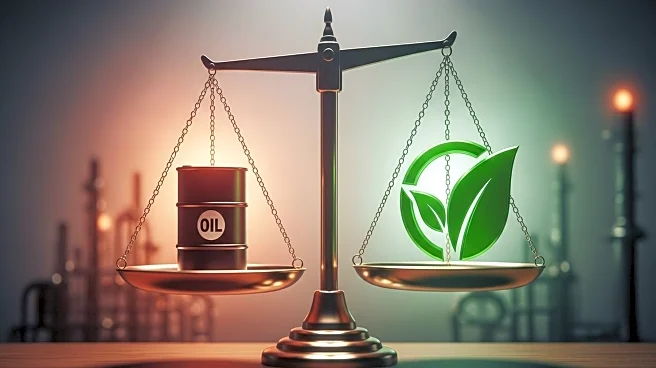What's Happening?
A significant divide has emerged within the copper industry regarding future price trends. At the London Metal Exchange Seminar, experts debated the impact of mine disruptions and demand fluctuations on copper prices. The benchmark LME copper price recently hit $11,000 per metric ton, driven by disruptions at major mines like Gasberg in Indonesia. Analysts are split, with some predicting further price increases due to supply constraints, while others argue that demand is weak and the market is oversupplied. The debate highlights differing views on the impact of U.S. tariffs and the movement of copper supplies to the U.S., which some analysts believe could lead to a surplus.
Why It's Important?
The copper price debate is crucial for industries reliant on this metal, including construction and electronics. High prices could lead to increased costs for manufacturers and consumers, while a surplus might stabilize prices. The industry's ability to meet demand amid disruptions is critical for the global economy, especially as copper is essential for energy transition technologies. Stakeholders, including investors and policymakers, must navigate these uncertainties to make informed decisions about resource allocation and investment strategies.
What's Next?
The industry may see further price volatility as stakeholders assess the impact of tariffs and supply chain shifts. Analysts will continue to monitor mine disruptions and demand trends, potentially leading to revised forecasts. Companies might explore alternative sourcing strategies or invest in technologies to mitigate supply risks. The ongoing debate could influence future trade policies and investment in copper mining infrastructure.
Beyond the Headlines
The copper industry's challenges underscore the need for innovation in mining technologies and supply chain management. As mines become deeper and more complex, companies may need to invest in automation and advanced analytics to optimize operations and reduce risks. The debate also highlights the geopolitical dimensions of resource management, as countries navigate trade tensions and environmental considerations.












